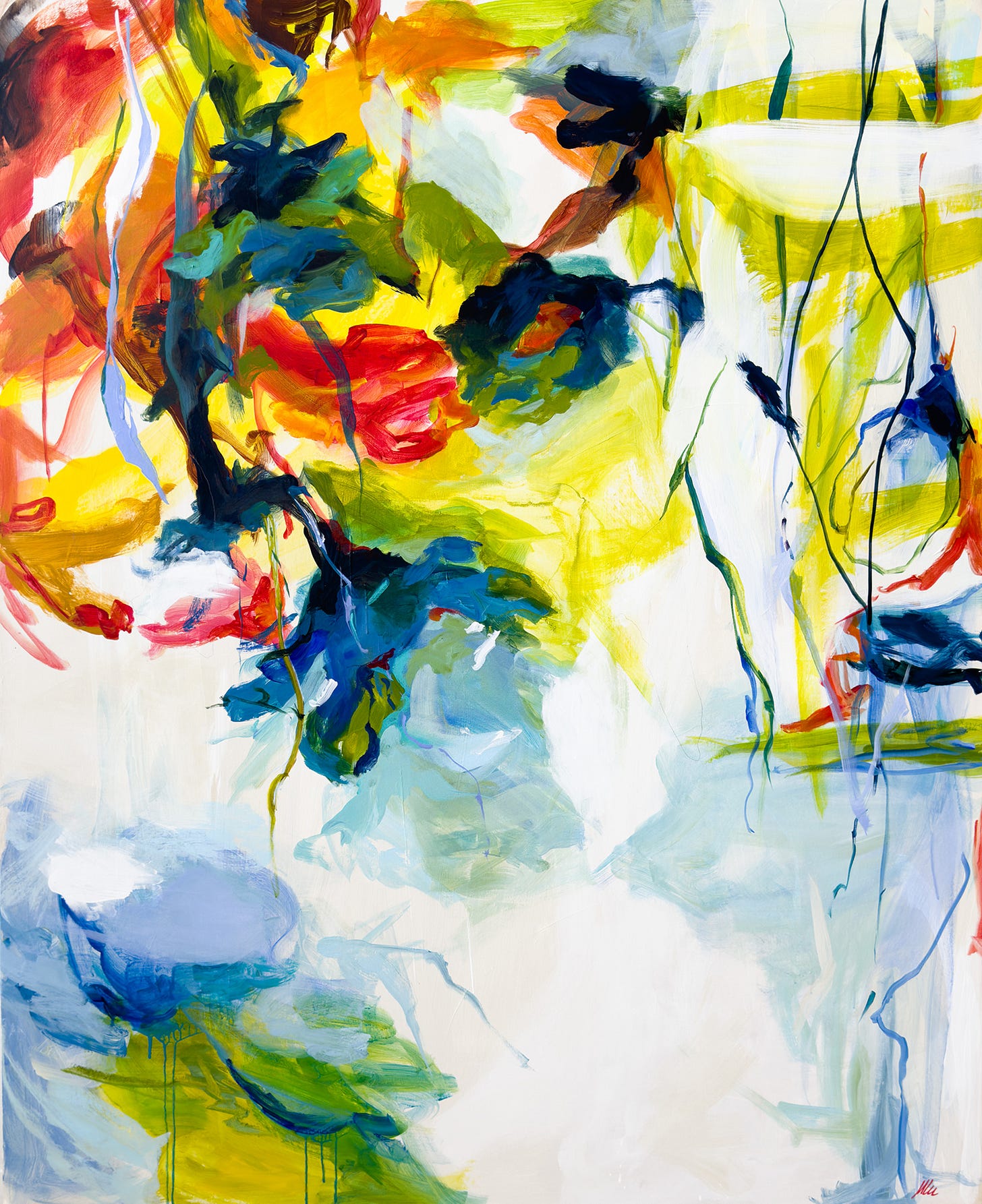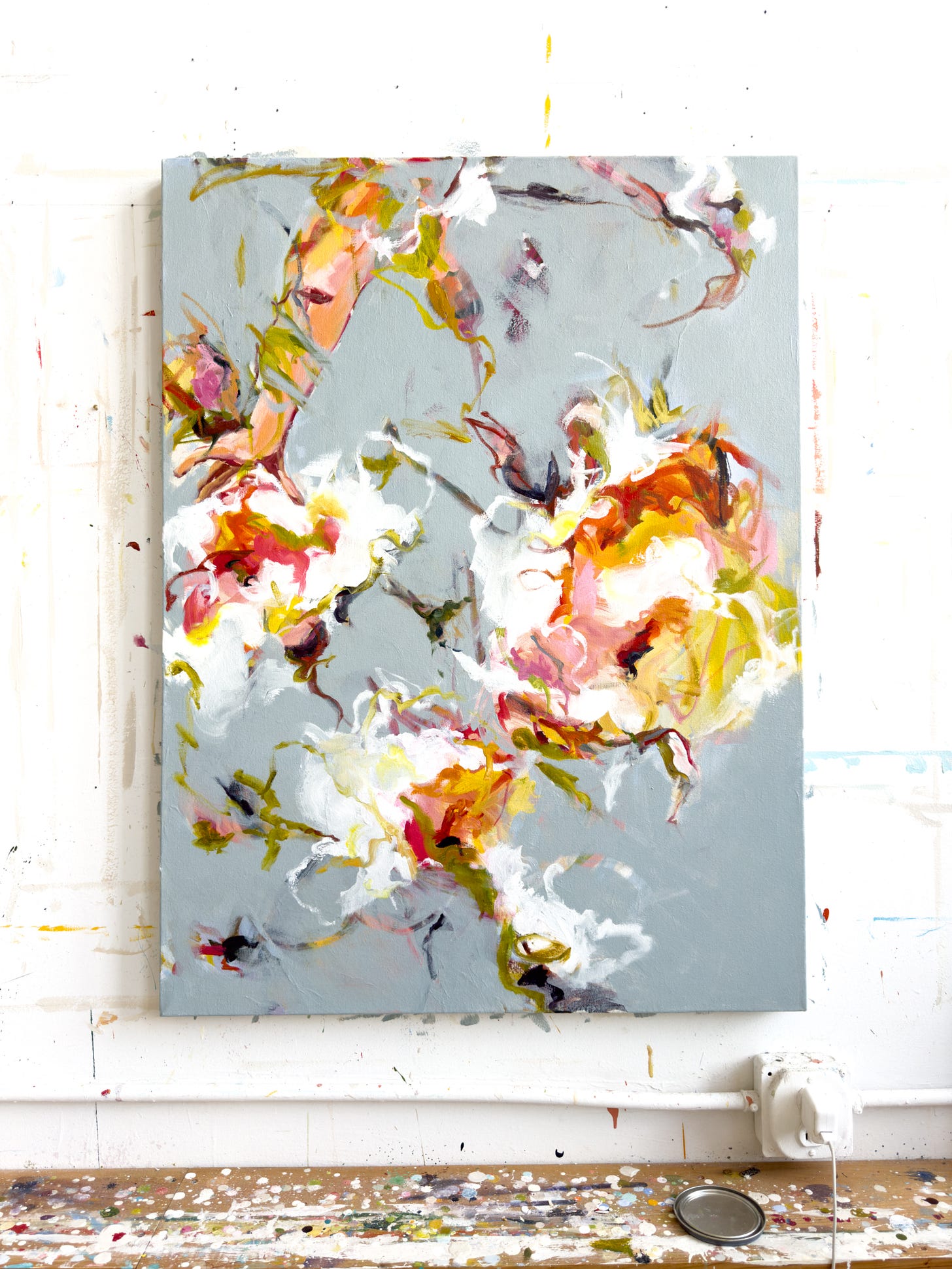Why red is the most misunderstood primary color?
Summer is here, and it feels full of color. It is my favorite time of year, especially since I live in a place with a climate that makes for gorgeous Summers full of vibrant hues.
I jotted some thoughts on my iPhone for this post about the uproar over the portrait of King Charles, which is doused in shades of red.
When His Royal Majesty's portrait was unveiled, this work of art received all sorts of press, most of it discussing it in an unflattering light.
This article and many others wanted to pin the artist Jonathan Yeo's color choice down to just about everything, including referencing the King's health diagnosis to having the red represent the bloodshed from colonialism as well as what people think is the impending collapse of the monarchy.
I think for the artist, it would be rather complicated at this point to say yay or nay on this sort of commentary because if you say, "No, that's not it at all…" Well, that could make people quite mad, I suppose. People want their opinions validated, don't they?
What is it about red that is so controversial?
I use it in just about every painting I create simply because I feel the need to. Often, I work at holding back, so I don't use too much. It's a glorious color.
How people interpret color reflects their internal workings. Red can mean blood or a field of poppies.
I remember an abstract landscape artist saying that he used red in his paintings to get people's attention, but blue sold better.
Yeo's painting was never up for "sale," which could have given him freedom in his studio, but it certainly became up "for sale" in the market of public opinion.
What if the glazing glow that surrounds the King's face had been created in shades of blue, ranging from cerulean to inky midnight shades? What if it had been painted with the dreaded pthalo blue? Artists and art teachers disdain the use of this overpowering, staining shade. This could get them to change their tune.
If this portrait were blue instead of red, I imagine there would have been articles written about death, darkness, the King's health, and political atrocities, just like red has.
My first glance at this portrait brought out an honest, "Wow! Fabulous painting!" But then I had my head tuned into the ideas around "disrupted realism" for a couple of years. I may have shared this book titled by John Seed “Disrupted Realism, Paintings for a Distracted World" in a previous post. I have returned to it on several occasions. It does seem to me that Yeo was leaning into these ideas and perhaps had been looking at some artists who had intuitively created a visual dialogue to address just how much and how fast imagery is coming at us now on a daily basis with a device in our hand at all times.
I like what Katherine Stanek explains in the forward: Every era witnesses groundbreaking technology that influences how we interact.
She observes that this artist's movement begins with an awareness that all things are interconnected.
Since I have unknowingly dipped into the movement without realizing someone was going to call it a movement, I have to agree with her observation completely.
When I painted this piece at the start of Covid, I knew it was a turning point for me. It is the only painting I have painted that I consider somewhat of a self-portrait. It began with my body, and then…well, it needed to say more. I needed to feel more as I painted.
When asked to explain the work below, which I showed and sold in Brooklyn two weeks ago, I muttered out a couple of explanations, but they didn't sound completely coherent even to me. I simply needed to get a body modeled via a marble statue on a canvas and then leave it to "bits" that were reaching for something in the natural world, connecting us to nature, connecting us to antiquity.
Does it work to challenge the modern concept of realism? “No” I do not consider myself a realistic painter, but I have a “yes” point of view because it comes from my deep-rooted ideas of what is real and what is spirit or what is energy. How are we communicating without dialogue, opinion, or discourse, and in what ways does that communication impact us?
When I look at Yeo's portrait, I don't "see red" controversy; I see the artist having a different type of conversation that ultimately reflects what is in the viewer's mind or subconscious.
That’s what makes it art.
Thanks so much for reading! It’s nice to get back to writing ;)
Until next time, Monica Lee Rich










Altogether coherent post!
Thank you!